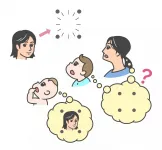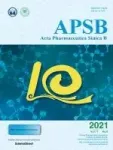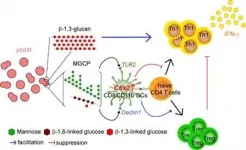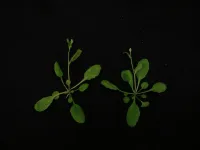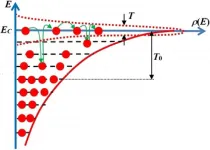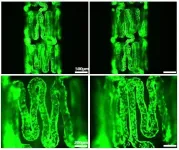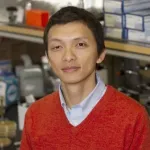(Press-News.org) RICHLAND, Wash.--Earth bears many signs of human influence, from warming that exceeds pre-industrial temperatures to a rising sea. Add to that list, now, the human influence on the timing of Earth's water cycle, revealed by a new study led by researchers at the U.S. Department of Energy's Pacific Northwest National Laboratory.
The research, published this week in the journal Nature Climate Change, peels back layers of climatological noise to uncover a clear signal: from 1979 to 2019, increases in greenhouse gases and reductions in human-generated aerosols triggered an approximate four-day delay in seasonal rainfall over tropical land and the Sahel. The lag could mean delayed crop production, exacerbated heat waves, and worsened wildfires, among other consequences.
"The global warming we've seen has already been attributed to human activities with high confidence," said atmospheric scientist Ruby Leung, who coauthored the study. "But, historically, we have not been very successful in pinpointing the footprint of human activity in the hydrological cycle. This study shows that, yes, the later onset of monsoon rainfall, paired with future warming projected by climate models, has already emerged."
More moisture
Ironically, the rain delay is caused by an increasingly moist atmosphere. As greenhouse gases warm Earth's surface, more water vapor makes its way into the atmosphere. This added moisture boosts the amount of energy needed to heat the atmosphere as spring transitions to summer, which can shift the timing of rainy seasons.
"When there is more water vapor in the atmosphere, it becomes more ocean-like," said Earth scientist and first author Fengfei Song. "And we know the ocean takes longer to warm up than the atmosphere. More moisture means it will take longer for the atmosphere to absorb energy and produce rainfall."
Human-generated aerosols, like the particulates produced from burning fossil fuels, tend to reflect sunlight. These cool the atmosphere and undercut the warming trend caused by greenhouse gases.
But, as aerosol concentrations continue to decline from efforts to improve air quality, some of that cooling effect is lost, which escalates both warming and the delay of monsoon rainfall in recent decades, according to the study.
If aerosol concentrations continue to decline and greenhouse gas concentrations continue to rise, the delay will extend in the future, said Leung. The study's authors project that, by the end of the century, the rainy season could be further delayed by more than five days over northern tropical land and more than eight days over the Sahel.
"For monsoon regions, like India, with an agrarian economy," said Leung, "a delayed onset of summer rainfall could devastate crop production and jeopardize the livelihood of large populations, unless farmers recognize and adapt to the long-term changes amidst the highly variable monsoon onset date."
What is the hydrological cycle?
Most of Earth's water lies within the ocean. Sunlight heats the sea, and some of that water rises from the surface as vapor. That water vapor, along with water transpired from plants and water evaporated from soil, can condense and produce clouds and rainfall when it encounters rising air.
Rising air currents are strongest in the tropics, where solar radiation is strongest. Gaze upon our planet from space and you'd see the product of these strong, moisture-rich air currents: Earth's signature rain band, vigorous with storms and showers, encircling the planet about its middle.
As seasons shift and the Sun migrates between hemispheres, the rain band moves. When the band reaches land, it marks the onset of the monsoon season, delivering ample water supply for both tropical forests and the large populations that live within and near them.
In a world made warmer by human activity, a more moisture-laden atmosphere stores more energy, delaying the movement of the rain band and the onset of monsoon rainfall.
A signal among noise
Researchers first projected the rain delay through climate modeling roughly a decade ago. Being able to point to the delay within the observational record, however, proved challenging. One does not simply measure global precipitation; the difficulty, said Leung, is twofold.
First, disentangling human-caused influence from the day-to-day or year-to-year variability in Earth's climate is arduous work. Think of trying to pinpoint a single voice's signature audio wave in a recording filled with background chatter.
"Temperature and precipitation aren't the same each year," said Leung. "There's a huge amount of variability."
The second challenge stems from data collection. Where the historical record of global temperature is long-standing, data-rich, and directly measured, the record of global precipitation is relatively short and saddled by uncertainty.
Satellites measure global precipitation indirectly by detecting energy reflected by clouds and raindrops, which imbues a degree of uncertainty. Widespread satellite use began in the late 1970s, leaving a record of only several decades.
Uncovering the delay signal buried in the noise of climatic variability came as global precipitation data became increasingly available and climate models grew more robust. By using eight observational data sets paired with 243 simulations made through multiple models, the study's authors were finally able to show that rainfall had indeed delayed in spring in the northern hemisphere.
Much of the seasonal shift came as a result of post-World War II economic development that brought increased greenhouse gas emissions and, subsequently, a reduction of aerosol emissions beginning in the 1980s, according to the study. Human activity was not the only driver behind the delay, however. Decadal sea surface temperature variability, among other factors, may have also contributed to the seasonal shift.
INFORMATION:
This research was funded by the U.S. Department of Energy Office of Science Biological and Environmental Research as part of the Regional and Global Modeling and Analysis program area, which is part of the Earth and Environmental Systems Modeling Program.
Pacific Northwest National Laboratory draws on its distinguishing strengths in chemistry, Earth sciences, biology and data science to advance scientific knowledge and address challenges in sustainable energy and national security. Founded in 1965, PNNL is operated by Battelle for the U.S. Department of Energy's Office of Science, which is the single largest supporter of basic research in the physical sciences in the United States. DOE's Office of Science is working to address some of the most pressing challenges of our time. For more information, visit PNNL's News Center. Follow us on Twitter, Facebook, LinkedIn and Instagram.
We can generally recognize an object, even if it is presented for a very brief time. However, if another object appears immediately following the first object, the perception on the first object is impaired such that we do not notice its existence. This perceptual phenomenon, called "visual backward masking," is used in vision science to study how visual perception is processed in the brain. Interestingly, this phenomenon occurs even if the second object does not spatially overlap the first object, such as a contour or four dots surrounding the object.
The occurrence of this phenomenon is assumed to be due to a disruption of "feedback processing." When we see something, visual ...
In 2021 Acta Pharmaceutica Sinica B (APSB) is celebrating its 10th anniversary. The journal was founded with the goal of creating a global high-level forum centred around drug discovery and pharmaceutical research/application. APSB was included by Chemical Abstracts in 2011, accepted by PubMed Central in 2015, indexed by Science Citation Index in 2017 and has evolved to become one of the most important international journals in the field of pharmaceutical sciences.
Volume 11, issue 6 is a special issue marking the beginning of a series of celebratory events ...
The development of therapeutic drugs for inflammatory bowel disease, an intractable immune disease, and multiple sclerosis - an autoimmune disorder - is gaining traction. A research team from the Department of Life Sciences at POSTECH and a joint research team at ImmunoBiome Inc. have uncovered that a yeast-derived polysaccharide mixture inhibits the onset and progression of immune disorders.
The number of cases of Crohn's disease and ulcerative colitis - both inflammatory bowel diseases - in Korea was about 18,000 and 37,000 respectively as of 2019, increasing about 2.3 times ...
With a goal of breeding resilient crops that are better able to withstand drought and disease, University of California San Diego scientists have developed the first CRISPR-Cas9-based gene drive in plants.
While gene drive technology has been developed in insects to help stop the spread of vector-borne diseases such as malaria, researchers in Professor Yunde Zhao's lab, along with colleagues at the Salk Institute for Biological Studies, demonstrated the successful design of a CRISPR-Cas9-based gene drive that cuts and copies genetic elements in Arabidopsis plants.
Breaking ...
Tsukuba, Japan - The COVID-19 pandemic has changed the way people eat, work, shop and go to school. Now, researchers from Japan have found surprising differences in the way people use healthcare services--including house calls from doctors.
In a study published this month in BMC Emergency Medicine, researchers from the University of Tsukuba have revealed that patterns in illness type and severity did change during the pandemic--with unexpected trends that may tell us about how people use health care services when personal contact carries inherent risk.
In Tokyo, private after-hours house call services (AHHC) provide in-home medical service outside of regular ...
Quantum dots (QDs) are semiconductor particles only a few nanometers across that, thanks to their small size, exhibit peculiar optical and electronic properties due to quantum mechanics. With existing and foreseen applications in screens, lighting, lasers, and energy harvesting, research in quantum dots has been steadily progressing. In particular, colloidal QDs (CQDs) have been in the nanotechnology spotlight for over a decade.
CQDs are semiconductor nanocrystals that can be produced easily from solution-based processes, which make them suitable for mass production. However, for CQD-based devices to operate at their best, the quantum dots should be monodisperse--that is, ...
The contemporary materials industry raises the problem of creating a microscopic theory that allows to describe the observed physicochemical properties of a wide class of substances which are in demand in modern industry, medicine, and agriculture. A general and consistent theory will help to obtain reliable information from experimental data on the structure of matter, existing interactions and dynamic processes occurring in it, which can help in the synthesis and quality control of prospective materials.
The study of the molecular structure of a substance and its intermolecular interactions is one of the most important and interesting tasks facing modern science. Of particular ...
Medical materials that can be inserted into the human body have been used for decades in the field of regenerative medicine - for example, stents that can help dilate clogged blood vessels and implants that can replace teeth or bones. The prolonged use of these materials can result in serious adverse effects and loss of various functions - for example, inflammatory responses, generation of fibrous tissues around the material, and generation of blood clots that block blood vessels.
Recently, a Korean research team has drawn attention for developing a technology to reduce ...
Curtin University research has found tiny amounts of gold can be trapped inside pyrite, commonly known as 'fool's gold', which would make it much more valuable than its name suggests.
This study, published in the journal Geology in collaboration with the University of Western Australia and the China University of Geoscience, provides an in-depth analysis to better understand the mineralogical location of the trapped gold in pyrite, which may lead to more environmentally friendly gold extraction methods.
Lead researcher Dr Denis Fougerouse from Curtin's School of Earth and Planetary Sciences ...
Effective diagnostics, therapies and treatments for diseases and infections could increasingly involve re-engineering the body's internal biomechanisms at their most basic chemical and molecular foundations.
Growing knowledge about the body's biological processes is increasing the possibilities for restoring human health, says Xiao Wang, an associate professor of biomedical engineering in Arizona State University's Ira A. Fulton Schools of Engineering. He and a team of researchers are exploring ways to trigger and control cell differentiation and transition to unlock properties that may change bioengineers' approach to diagnostics, ...
